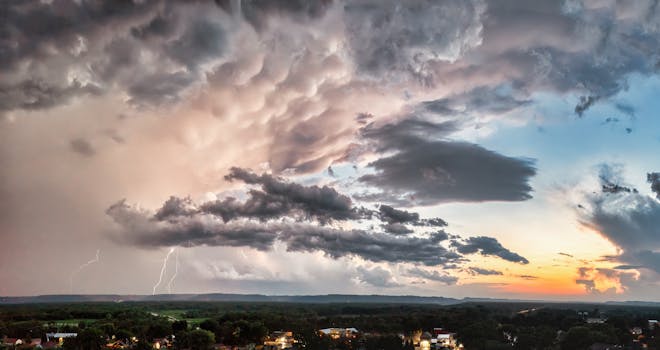Utilities

Tornadoes Tear Through South and Midwest Amid Devastating Storm Outbreak
The South and Midwest regions of the United States have been battered by a series of powerful storms, leading to multiple tornadoes that have left a trail of destruction and loss in their wake. This severe weather event is part of a larger storm system that has plagued these regions, bringing hazardous conditions including flash flooding and widespread power outages.
Overview of the Storm
The storm system began to take shape in early April, with severe weather warnings issued across several states, including Arkansas, Illinois, Indiana, Missouri, and Mississippi. The combination of daytime heating, strong wind shear, and moisture from the Gulf of Mexico created an unstable atmospheric condition perfect for the development of severe storms. These storms have been characterized by destructive winds, large hail, and multiple tornadoes, some of which were classified as EF3, indicating severe damage potential.
Recent Tornado Outbreak: April 2-7, 2025
In early April, a particularly devastating tornado outbreak occurred, marked by a slow-moving weather system and a stationary front that caused widespread destruction. This event highlighted the vulnerability of the Southern and Midwestern United States to severe weather, with areas such as Missouri, Arkansas, and Tennessee experiencing significant tornado damage and loss of life.
Key Locations Affected:
- Missouri: This state witnessed several significant tornadoes, including an EF2 in Pilot Grove and another near Nevada. The tornado sirens failed to sound in Pilot Grove due to a malfunction, though no fatalities were reported.
- Arkansas: A large, multiple-vortex EF3 tornado hit Lake City, prompting a tornado emergency declaration.
- Tennessee: An EF3 tornado struck Selmer, causing considerable damage and injuries.
Severe Weather Conditions
Storm Factors
The severe weather was primarily fueled by several key atmospheric conditions:
- Daytime Heating: This contributed to the instability of the atmosphere, creating the perfect conditions for thunderstorm development.
- Wind Shear: Strong wind shear is crucial for tornado formation, as it can cause rotating updrafts known as supercells.
- Moisture from the Gulf: Abundant moisture streaming in from the Gulf of Mexico added to the instability, enhancing storm energy and potential.
Impact on Communities
Damage and Injuries:
- The storms have resulted in extensive property damage, with roofs torn off homes and businesses.
- At least one fatality was reported in southeast Missouri.
- Power outages were widespread, affecting nearly 90,000 customers in initial reports.
Economic and Social Impact:
- The economic toll includes damage to infrastructure and interruption of daily life.
- Psychological trauma also affects communities, with many left homeless.
Safety Measures and Preparations
Given the ongoing risk of severe weather, residents are advised to remain vigilant and prepared:
- Stay Informed: Keep close tabs on local weather forecasts and warnings.
- Emergency Kits: Ensure each household has an emergency kit with essentials like food, water, and a first aid kit.
- Evacuation Plans: Have a clear plan in place if evacuation is necessary.
Timeline of Severe Weather Events
- Early April (2-7): A devastating tornado outbreak and historic floods affected the South and Midwest.
- Mid-April (15-17): Another round of severe storms is expected, targeting the Midwest and parts of the Mississippi Valley.
Future Weather Risks
As Easter weekend approaches, another round of severe storms is anticipated, potentially affecting millions of people across the Midwest and Mississippi Valley. This period is expected to bring further risks of large hail, destructive winds, and possibly tornadoes. Residents in areas such as Kansas City, Missouri, and Omaha, Nebraska, are warned to be on high alert.
Factors Contributing to Future Storms
- Temperature Fluctuations: Rising temperatures in areas like Omaha and Kansas City could enhance storm development.
- Dryline Formation: In western Texas, a dryline may trigger isolated severe storms.
Conclusion
The South and Midwest continue to face a heightened risk of severe weather, including tornadoes, as powerful storm systems persist through the spring season. It is crucial for residents to remain vigilant and prepared, following the latest weather forecasts and taking necessary precautions to ensure safety during these hazardous conditions.
Incorporating high-search-volume keywords like severe weather, tornado outbreak, and Midwest storms, this article aims to provide a comprehensive overview of the recent and ongoing severe weather events, offering insights into the causes and impacts of these storms while emphasizing preparation and safety measures for affected communities.



















